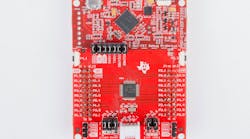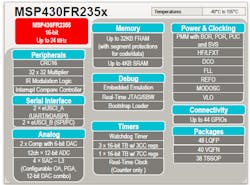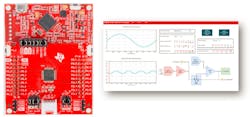Texas Instruments (TI) continues to extend its MSP430 FRAM-based microcontrollers (Fig. 1). Non-volatile FRAM is ideal for low-power applications because systems can power on and off quickly without the need to move data to and from flash. Logging systems can shut down as soon as data has been moved into main memory. FRAM is faster than flash without the write speed or write cycle limitations of flash. It also uses less power when writing.
1. Texas Instruments offers a range of MSP430 MCUs with FRAM support.
TI’s FRAM family includes low-cost implementations that cost as little as a quarter to ones designed for ultrasonic or capacitive-touch applications. The latest incarnation incorporates four smart analog combo modules (Fig. 2). Each smart analog combo module can be configured as a 12-bit DAC, op amp, or transimpedance amplifier. These can be linked together to provide the same kind of performance and flexibility as discrete devices while reducing the bill of materials (BOM). The chip also has a 6-bit DAC and 12-channel, 12-bit ADC.
2. The latest MSP430 incorporates four smart analog combo modules that can be configured into devices such as ADCs and op amps to bring analog functionality into the microcontroller.
A number of reference designs developed by TI take advantage of the new analog support. For example, four smart analog combo modules can be used to implement systems like current-loop temperature transmitters (Fig. 3). Other reference designs include smoke-detector and thermostat support.
3. The four smart analog combo modules can be used to implement systems such as current-loop temperature transmitters.
The 24-MHz MSP430FR235x comes with 16 or 32 kB of FRAM (Fig. 4). FRAM is used for code and data. The memory-protection unit prevents accidental changes to program code. The MSP430FR231x keeps the 12-bit ADC, but foregoes the four analog combo units. Both handle a temperature range of −40 to 105°C. They have four programmable serial ports and a 32- × 32-bit multiplier.
4. The 24-MHz MSP430FR235x also includes a 6-bit DAC and 12-bit ADC.
TI’s LaunchPad kit is one way to check out the new MSP430FR2355 microcontroller (Fig. 5). The eval board includes the eZFET debugger with EnergyTrace support. It can handle one of TI’s 40-pin booster-pack boards. It also has a Grove module interface for connecting additional sensors, as well as an on-board ambient light sensor.
5. TI’s LaunchPad kit has a MSP430FR2355 microcontroller (left). The Smart Analog Combo GUI (right) lets developers test configurations.
In addition, a Smart Analog Combo GUI lets developers test smart analog combo module configurations. It can supply source waveforms and display output waveforms.







